With 60 percent of brands and 43 percent of agencies increasing their affiliate commission spend, affiliate publishers need a relevant website to remain competitive.
Publishers of all sizes—including bloggers, coupon sites, influencers, review sites and email marketers—can create simple websites and benefit from a sustainable revenue stream through affiliate marketing. From Tiffany Aliche to Katie Serfling, each affiliate publisher finds their niche and uses their website to create engaging content and secure lucrative affiliate partnerships.
Begin your journey as an affiliate publisher by discovering the steps to build an engaging website that attracts the right brands to earn money today.
Do you need a blog or website to become an affiliate publisher?
Technically, no. To get started, you just need the following:
- An audience
- Brand partners
- An affiliate network or other place to create affiliate links
- Platform/s to distribute those links
Many successful content creators make money without having a website or blog. Instead, they opt to promote brands to their audience via social media or lean on sponsored content for revenue. While you can make a living this way, having a website or blog has many additional benefits—even if you’re a successful influencer.
3 Benefits of an affiliate marketing website
1. Ownership and control over your content
With a website, once you buy the domain, you own it. But with a social media profile, you don’t own the posts—private companies and shareholders do. When you build your brand exclusively on social, you’re building your business on rented land.
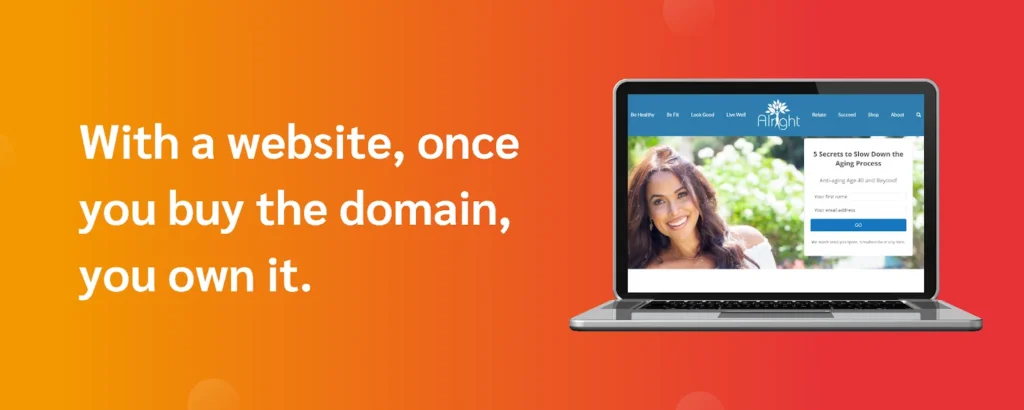
Image source: AlrightNow
Establishing an affiliate presence exclusively on social media limits your growth potential and puts you at the whim of outside forces. Changes in platform ownership, policies, algorithms, and pricing can have a huge impact on your business.
Have you ever checked your social media notifications only to find that the entire platform has changed after an update? Unfortunately, this is beyond anyone’s control. While you might receive a brief heads-up before the changes occur, they are ultimately unavoidable.
The unpredictable nature of social media platforms can be frustrating, but as a content creator, it also directly affects your income. The digital media company founder Joe Speiser reported losing over $100 million after Facebook’s sweeping algorithm changes in 2018—one of many stories about companies losing big when they invest too heavily in social.
2. Gain traction with SEO
When you house your content primarily or exclusively on social media, you can’t build up SEO relevance in a particular topic area. Search engines don’t index social media posts, making establishing consistent passive income from any popular piece you write is more challenging.
3. Fixed costs for better budgeting
You can set up a social media profile for free, but that doesn’t mean people see your content. Gone are the days when posts could organically rise to the top of people’s feeds.
Today, most social media platforms follow a “pay-to-play” model. You need to invest in targeted ads and boosted posts to get seen. Over time, this becomes expensive—especially when it’s your primary channel for promoting affiliate links.
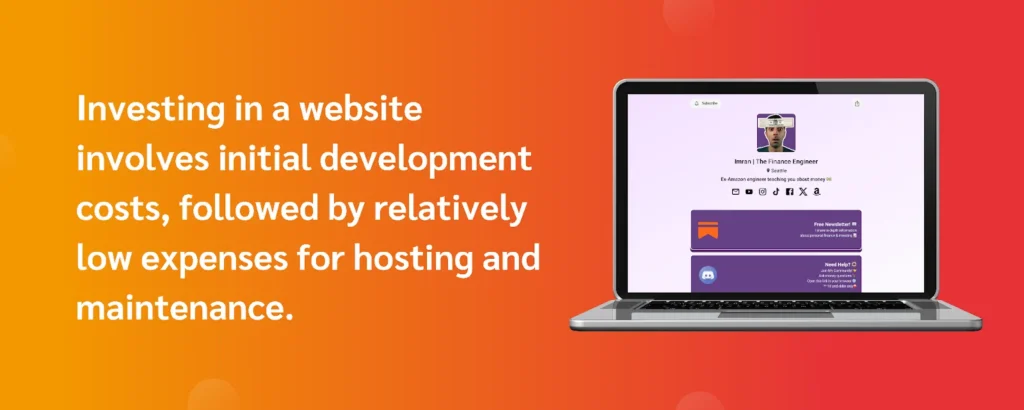
Image source: The Finance Engineer
When you invest in a website, you pay upfront development costs, but after that, expenses are relatively small for hosting and maintenance. You can then focus on ways to drive traffic, such as email and search engines. This allows you to diversify your traffic sources and give your business more stability in the long run.
Social media works well as a marketing channel—not as your primary “home” online.
Creating an affiliate website in 8 simple steps
Becoming an affiliate publisher opens a world of opportunity, and it all starts with mastering a few straightforward steps. Discover the eight essential steps to create a website and set you on the course to succeed with affiliate marketing.
- Choose a topic
- Buy a domain
- Build your site
- Start publishing
- Sign up for affiliate programs
- Add affiliate links to your website
- Drive traffic to your site
- Consistently publish high-quality content
Step 1: Choose a topic
First, think of what you want to write about. What’s your hobby? What’s your passion?
It might be running, collecting toy robots, quilting, or growing spicy peppers. While these topics may seem obscure at first glance, they’re all good fits for an affiliate website.
Niching down works for affiliate publishing because you can more easily:
- Identify your audience demographics
- Address your audience’s pain points
- Establish authority on a topic
- Promote products that meet your audience’s needs
Above all, make sure you find the topic interesting. You need to create content about your topic regularly.
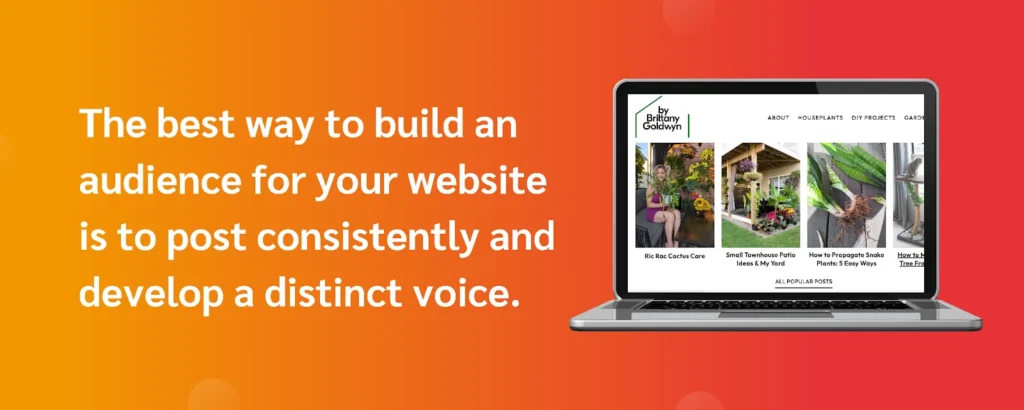
Image source: Brittany Goldwyn
You’re one step ahead if you’re already creating content in a certain niche. Simply create a website about your topic and use content from other platforms—such as YouTube or a podcast—to populate your website.
Step 2: Buy a domain name
Your website’s core focus can help you develop a website URL. There are many angles you could take when creating your URL. Maybe you want to go in a funny direction and pick HotPepperCity.com for your website about growing chilis. Or you can get straight to the point and pick FransQuiltBlog.com for all your thoughts about quilting.
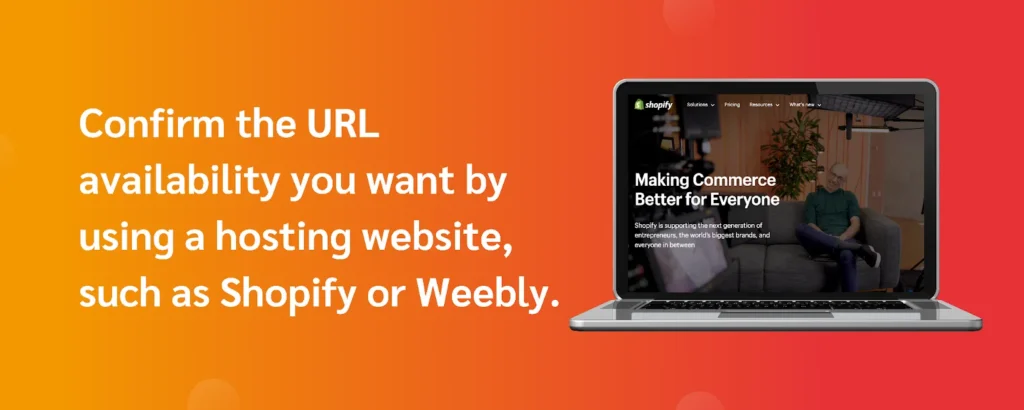
Image source: Shopify
Simply select from any of the following hosting websites, search available URLs, and buy one.
Step 3: Build your site
You can hire an experienced web designer or agency to build an affiliate marketing websitesite, but that’s not your only option. Even a novice can publish a professional-looking website in a matter of hours.
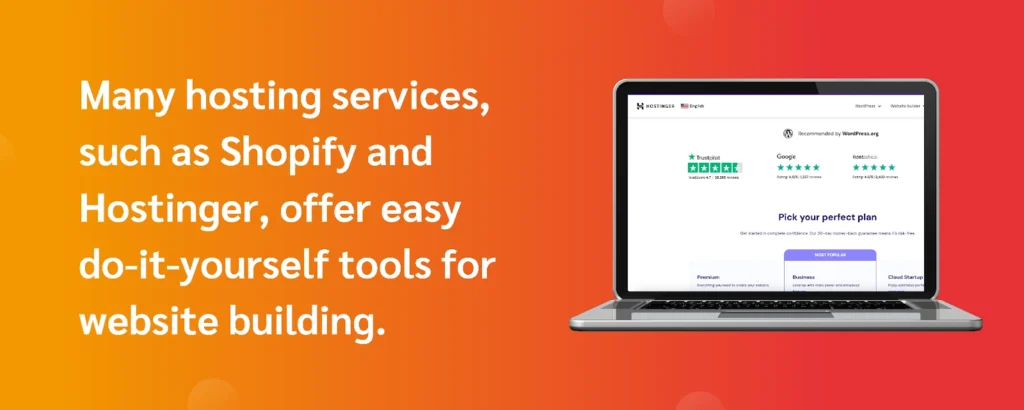
Image source: Hostinger
Hostinger offers an AI-powered website builder, while other services use WordPress, a free, open-source software used by 43 percent of the web. CRM platforms like HubSpot provide free logo makers.
Make your user experience shine
No matter how you build your website, select a layout that’s true to your brand and simple to use. User experience is essential when building and maintaining an audience. According to Amazon Web Services, 88 percent of website visitors are less likely to return to a website after a poor experience.
Optimize your user experience by:
- Choosing a responsive, mobile-friendly layout
- Checking your website’s loading speed regularly
- Keeping your pages clutter-free to spotlight your content
Look for similar, successful websites in your industry or niche to see what a high-quality user experience looks like.
Step 4: Get familiar with publishing platforms and tools
Familiarize yourself with the controls, no matter your hosting service or publishing platform. Don’t worry; it’s not rocket science. Most content management systems (CMS) are intuitive, so it only takes a few minutes to learn how to publish a post, add links, and insert photos and videos.
Before you move on to the next step, write and publish a few posts. Find article formats that feel comfortable and repeatable.
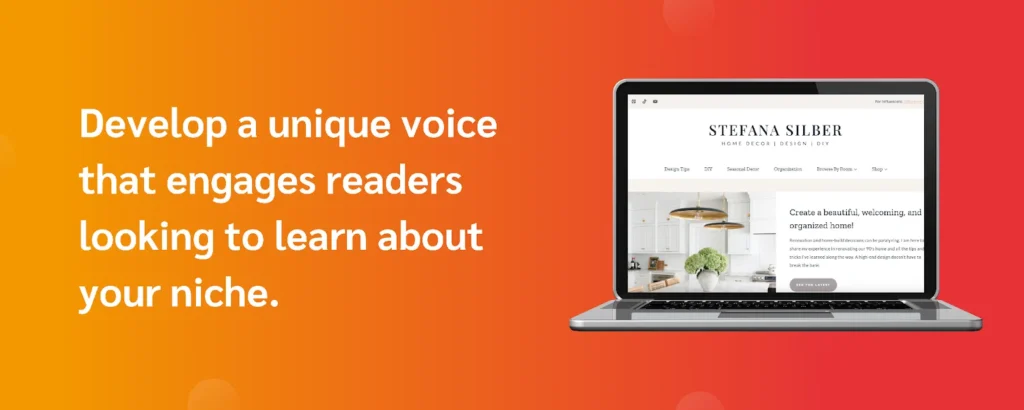
Image source: Stefana Silber
Remember, you’re creating content about your passion, so find a way to let it shine through.
Step 5: Sign up for affiliate programs
Believe it or not, you’ve already reached the point where you can start signing up for affiliate programs. Find and join affiliate programs in one of two ways.
1. Work directly with a brand
Over 80 percent of advertisers have an affiliate marketing program, so a few of the brands or retailers you already love likely have their programs.
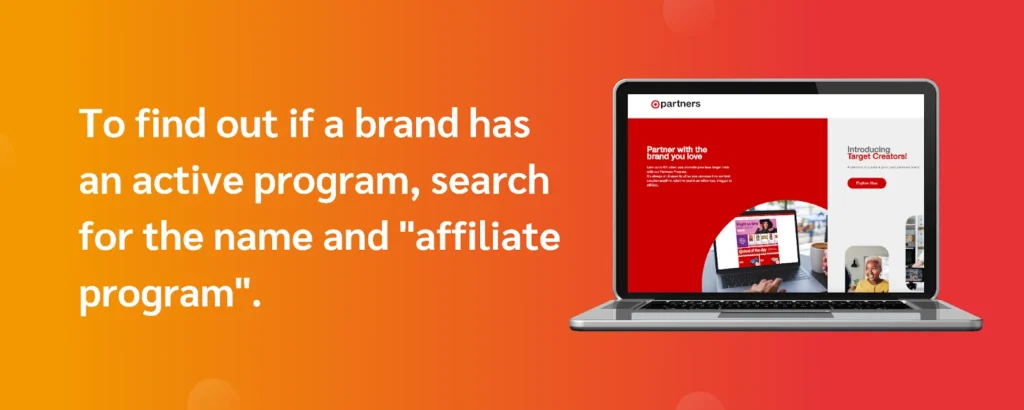
Image source: Target Partners
For example, a search for “Target affiliate program” leads you to partners.target.com. The retailer clearly lays out its affiliate program down to the potential commission rate.
2. Join an affiliate program
While many brands offer easy sign-ups directly from their websites, others more actively court partners using affiliate programs.
Amazon Associates operates one of the most famous affiliate programs in the world. While Amazon is the biggest online retailer, it doesn’t pay the highest commissions. Rates vary depending on product category, but most only offer single-digit commissions.
Fortunately, companies like impact.com built their business around managing affiliate programs for hundreds of brands, making it easy for large and small publishers to sign up.
The impact.com Marketplace connects you directly to brands that match your interests. This makes it easier to find the right brand partner with the products and services that appeal to your audience. Better yet, these brands usually offer higher commissions than Amazon.
When you join a larger affiliate platform, you also gain the opportunity to:
- Forge a direct relationship with brands of your choosing
- Negotiate specific contract terms tailored to your needs
- Optimize your partnerships as your business evolves
Step 6: Add affiliate links to your site
Now that you’ve successfully joined a brand’s affiliate program or an affiliate network, it’s time to start earning money!
You’ll find most modern affiliate programs straightforward to use. Brands let you search through lists of products and choose what you’d like to promote. Many affiliate publishers like larger affiliate networks because they offer more product options that potentially suit your audience. The brand then provides automated, customized affiliate links to embed within your content.
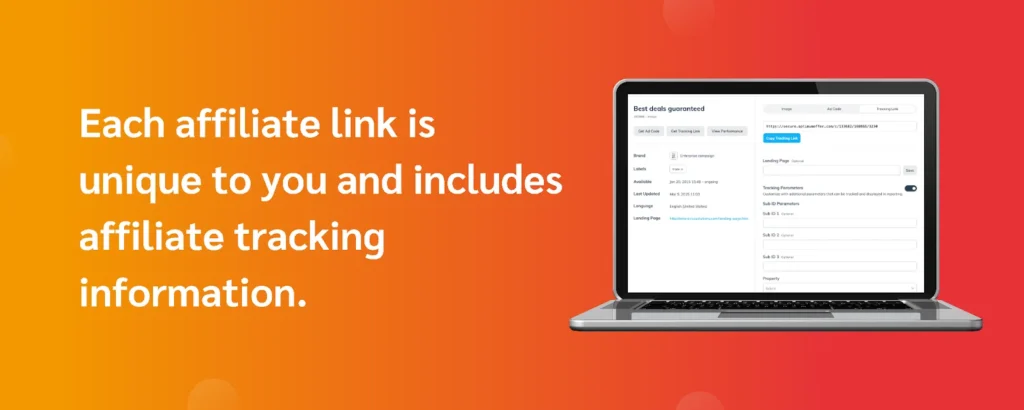
Image source: impact.com
Whenever a reader clicks the link, the brand knows that you sent the traffic their way. When customers purchase on the site, you earn a commission on that purchase.
Step 7: Drive traffic to your website
Increased website visits mean additional opportunities for successful sales. As an affiliate publisher, every sale means more commissions for you. Even if these new visitors don’t necessarily buy anything using your link, you captured the attention of someone who may purchase in the future.
Create a robust content amplification strategy. Invest in these organic marketing methods to drive more traffic to your website.
4 Ways to drive traffic to your website
1. Prioritize SEO
With Search Engine Optimization (SEO), you can get free, organic traffic to your website using popular keywords that resonate with your audience. The more you invest in organic search, the more traffic you receive. BrightEdge research found that 53.3 percent of all web traffic comes from organic search, with most users only clicking through the first five results of their search.
Not convinced? Consumer behavior reflects the power of investing in search-optimized content and other SEO efforts. In fact, a recent survey showed 49 percent of shoppers use Google to discover or find a new item or product.
2. Maintain an email list
Email marketing has an average return on investment (ROI) of $38 for every $1 spent, and still stands as one of the best ways for publishers to promote products.
When you build and maintain a healthy email list, you always have an owned database of subscribers who opt to hear from you. Even if subscribers don’t purchase products directly through your emails, you can still benefit from the traffic emails drive to your website.
3. Stay active on social media
Choosing to build your content business’ home base on a website instead of social media doesn’t mean you should swear off these platforms altogether.
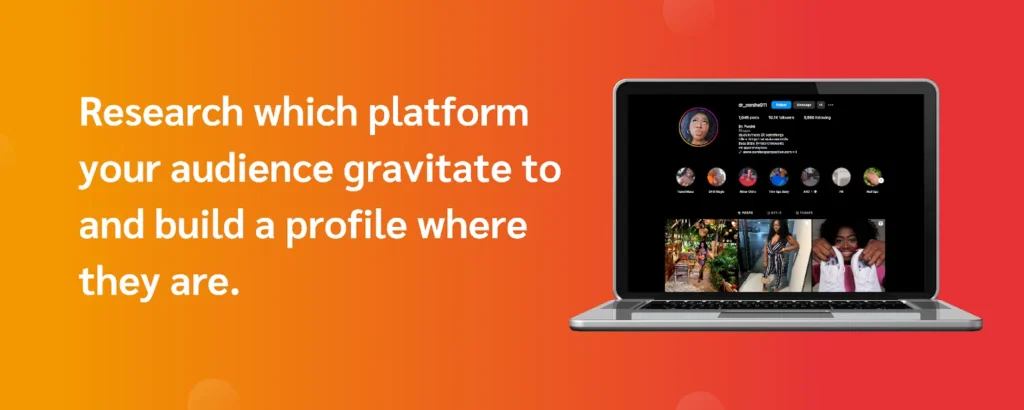
Image source: @dr_porshe911
Social media can be a valuable source of exposure for your content and traffic to your website. In 2024, internet users spent an average of 143 minutes on social media daily, and marketers named increased exposure and traffic among the top social media marketing benefits.
Think of social media as a marketing channel rather than your online home. Stay active and engage your audience by consistently linking to your content. Always experiment with new ways to encourage social media followers to click away from the platform to your website, email list, and other owned assets.
4. Write guest posts
Broaden your scope by guest posting on other websites in your niche, linking to your website. Spending time creating content for someone else’s website may seem counterintuitive, but guest posting can directly increase traffic by exposing your content to a new audience.
Guest posting also comes with other benefits that indirectly boost traffic, such as:
- Connecting with a broader audience and potentially gaining followers
- Building bridges with other content creators
- Establishing yourself as a thought leader in your niche
- Growing domain authority and boosting SEO efforts
Step 8: Consistently publish high-quality content
Major publishers with huge newsrooms may promote some of the same products you already link to on your website. To remain relevant in today’s competitive affiliate publishing world, you need to develop an audience and earn their trust with high-quality content that soothes their key pain points.
Create an editorial calendar to consistently publish insightful, original content on a set schedule.
Some ways to continuously come up with topic ideas in your niche include:
- Sharing solutions to common challenges your audience encounters
- Addressing new, relevant research and trends
- Comparing similar products as they’re released
- Compiling roundups of products that address specific pain points
- Highlighting success stories and case studies
- Creating new content based on seasonality
Remember we advised you to write a few posts and develop a voice? That voice also earns your audience’s trust. That trust, in turn, leads them to click on the products you promote and endorse, and that paves the road to greater affiliate revenue.
FAQ
Starting an affiliate marketing website involves eight key steps.
- Choose a niche that aligns with your interests and has a potential audience.
- Secure a domain name that reflects your site’s focus and resonates with your audience.
- Build your website using user-friendly platforms that offer customizable templates, ensuring a seamless user experience.
- Familiarize yourself with publishing tools to create engaging content consistently.
- Sign up for affiliate programs that align with your niche and audience preferences.
- Strategically add affiliate links to your content.
- To drive traffic, prioritize SEO, maintain an email list, and leverage social media.
- Consistently publish high-quality content to retain and grow your audience.
While technically you don’t need a website to become an affiliate marketer, having one offers significant advantages. A website provides ownership and control over your content, unlike social media platforms where changes in algorithms can impact your reach. With a website, you can effectively leverage SEO to increase visibility and establish authority in your niche, leading to more consistent passive income. Additionally, the upfront costs of creating a website can lead to better budgeting and diversified traffic sources, providing long-term stability and growth for your affiliate marketing endeavors.
Increasing traffic to your affiliate marketing website is key to boosting your revenue. Start by optimizing your site for search engines through targeted keywords and SEO best practices, as organic search can account for over half of all web traffic. Build and maintain an email list to communicate directly with your audience, as email marketing delivers a high return on investment. Stay active on social media to enhance exposure and drive traffic back to your website. Additionally, consider writing guest posts on related websites to broaden your reach and establish authority, which not only directs traffic but also strengthens your site’s SEO.
Grow revenue with impact.com’s affiliate marketplace now
Join the impact.com marketplace—a part of the impact.com for Publishers suite—to find the right brand partners for your content. Build your affiliate program, discover new brands, and start earning more revenue.
Seamlessly blend your content and the products you promote. A suite of automation tools helps you continue building deeper relationships with both brands and your audience.




